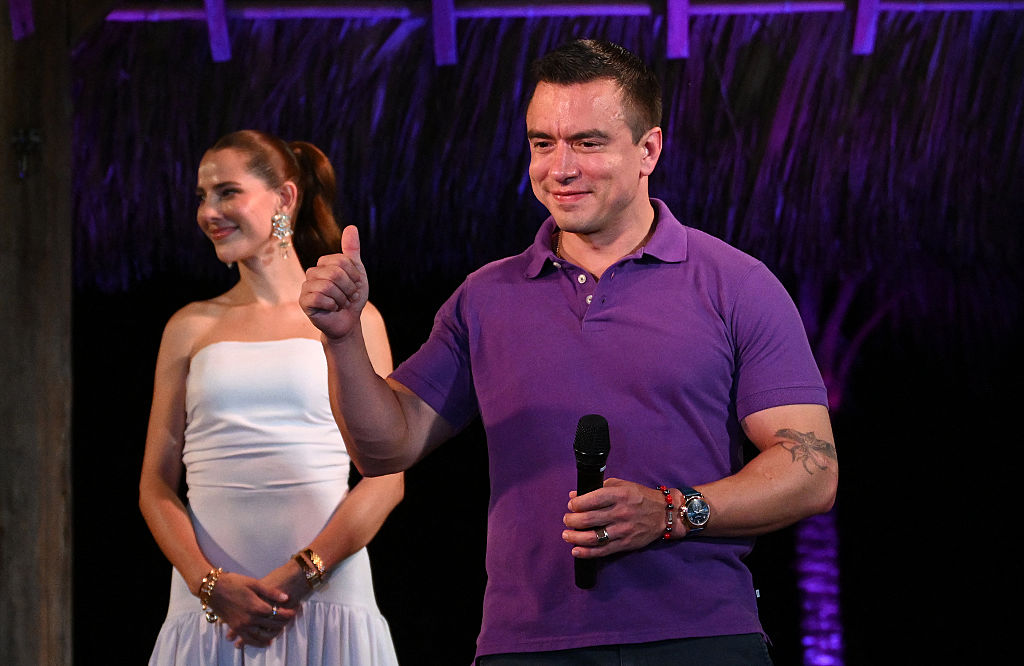Brazil Update: Rousseff's Second-Term Cabinet Shuffle
Brazil Update: Rousseff's Second-Term Cabinet Shuffle
Learn about some of the new key members of the president’s cabinet, including finance and defense posts.
Ahead of her January 1 inauguration to begin her second term, President Dilma Rousseff made major changes to her cabinet. Though she kept 15 ministers, she reshuffled and added 24 names.
Brazil has a total of 39 ministers—more than that of Chile and the United States combined—and the president chooses candidates from a variety of political parties within the governing coalition. Rousseff swore in the new ministers on January 1.
Here are highlights of some of the new faces in the Planalto.
Finance Minister: In November, Rousseff tapped Joaquim Levy, who left his position as president of Bradesco Asset Management for the job. Previously, he served as federal treasury secretary under ex-President Luiz Inácio Lula da Silva, as well as Rio de Janeiro’s finance secretary. After he was appointed, Levy said he would address the country’s public finances and stagnant growth. Brazil’s GDP rose by an estimated 0.15 percent last year, and is slated to grow 0.5 percent in 2015. Known as “Edward Scissorhands” for his ability to reduce spending, Levy plans to implement austerity measures this year.
Foreign Affairs Minister: Tapped on New Year’s Eve, Ambassador Mauro Vieira had served as Brazil’s ambassador to the U.S. since 2010. Previously, he spent six years as ambassador to Argentina, and also served in diplomatic posts in France, Mexico, and Uruguay. Rousseff swapped Vieira with the previous foreign affairs minister, Luiz Figueiredo Machado, who now heads to Washington to become ambassador to the U.S. Vieira’s first overseas trip will be to Beijing this week for a China-Community of Latin American and Caribbean States forum.
Defense Minister: In late December, Rousseff named Jaques Wagner as defense minister. Wagner had served as governor of Bahia since 2007. A founding member of the Workers’ Party, Wagner worked as labor minister for Lula, as well as head of the Secretariat of Institutional Relations. Previously, he served as a congressman for Bahia state.
Development, Industry, and Trade Minister: Rousseff chose Armando Monteiro for this position in early December. Monteiro had served as a senator from Pernambuco since 2011; previously, he was a congressman from that state. In 2014, he ran an unsuccessful bid for governor of Pernambuco. Monteiro enters office at a challenging time: the trade ministry announced this week that Brazil posted an annual trade deficit for the first time since 2000. In 2013, the country had a $2.5 billion surplus.
Mines and Energy Minister: Tapped shortly before Christmas, Eduardo Braga will occupy the same seat Rousseff did during Lula’s administration. Braga had served as senator from Amazonas state since 2011, and was Amazonas governor from 2003 to 2010. He also served as a congressman and mayor of Manaus, the state capital. Braga enters office at a time when state-run energy company Petrobras is embroiled in one of the country’s largest corruption scandals. The company is facing a U.S. class action lawsuit over the corruption allegations, and some bondholders are pushing for the company to default on part of its foreign debt, which could happen as early as this week.
Agriculture Minister: In December, Rousseff confirmed Katia Abreu as her pick for the agriculture ministry, making her the first woman ever in this position. Abreu served as senator from Tocantins—a northern state dependent on agriculture and ranching— since 2007, and previously was a congresswoman for that state. She began her career working in agribusiness, and became the first female president of the National Confederation of Agriculture and Livestock. In Congress, she headed the agribusiness bloc, garnering the nickname “Miss Deforestation” from environmentalists.









